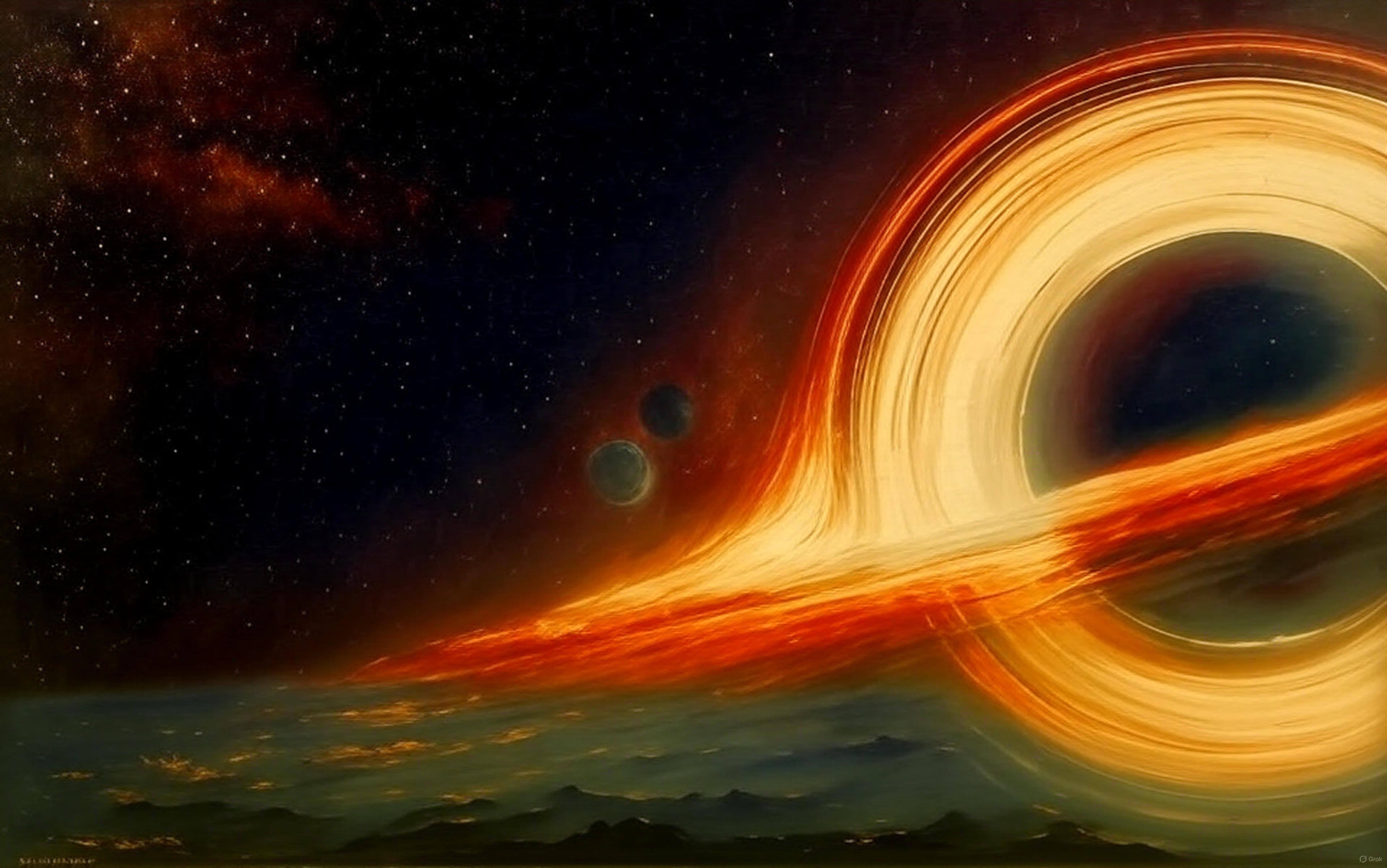Astronomers Witness Rare Magnetic Field Flip of Black Hole M87*
Introduction
In a stunning astronomical observation, scientists have documented a rare and unpredictable event: the magnetic field of the supermassive black hole M87* has flipped direction. Captured by the Event Horizon Telescope (EHT), this discovery challenges long-held assumptions about the stability of black holes and opens new avenues for understanding their dynamic behavior.
🚨 ASTRONOMERS JUST OBSERVED A BLACK HOLE’S MAGNETIC FIELD FLIP
— Mario Nawfal (@MarioNawfal) September 27, 2025
Scientists just watched the magnetic field around the famous black hole M87* completely reverse direction, like it suddenly decided it wanted to be the opposite kind of black hole.
The flip didn’t happen last week,… https://t.co/FYEZTsDJ2r pic.twitter.com/l2U7ZUHcKF
The Observation
M87*, located 55 million light-years away, sits at the heart of the M87 galaxy and has a mass over six billion times that of the Sun. First imaged in 2017, its glowing plasma ring, known as the accretion disk, displayed magnetic fields aligned with scientific predictions.
Over years of observation (2017–2021), researchers noticed an astonishing change. The magnetic fields did not simply wobble—they vanished and reappeared in the opposite direction, a complete reversal previously considered impossible for such massive objects.
SATURN’S MOON TITAN: CLOSER TO HOME THAN MARS?
— Mario Nawfal (@MarioNawfal) September 27, 2025
This is the surface of Titan, Saturn’s largest moon, captured by ESA’s Huygens probe on Jan 14, 2005.
Why it blows minds:
Atmosphere = 1.5x Earth’s pressure at sea level.
Thick nitrogen blanket with methane lakes and weather.… https://t.co/vW60cFZQII pic.twitter.com/8hqaM2YM6k
Image Source: Mario Nawfal/Twitter
Why This Flip Matters
- Challenges Stability Assumptions: Scientists expected magnetic fields of supermassive black holes to remain “rock-solid stable,” yet M87* demonstrated dynamic variability.
- Questions Current Physics Models: No existing theories predicted this sudden reversal, forcing a re-examination of black hole mechanics.
- Potential External Influence: Researchers are exploring whether the flip was caused internally or by interactions with surrounding cosmic matter.
Understanding the Timeline
Although the flip occurred 55 million years ago, we are only observing it now due to the time it takes light to reach Earth. This phenomenon highlights the unique challenge of astronomy: observing ancient events in the present.
Implications for Future Research
The magnetic field reversal may reshape our understanding of black holes. Scientists are now considering:
- Are black holes inherently more chaotic than previously thought?
- Could interactions with nearby cosmic phenomena trigger such flips?
- How should physics models adapt to account for this variability?
This event emphasizes that the universe still holds surprises, even in phenomena we believed were well understood.
FAQs
- Q1: What is M87*?
- A1: M87* is a supermassive black hole located at the center of the M87 galaxy, roughly 55 million light-years from Earth.
- Q2: How was the magnetic field flip observed?
- A2: Using the Event Horizon Telescope, scientists tracked the black hole’s plasma disk over several years, detecting the disappearance and reversal of magnetic fields.
- Q3: Why is this discovery important?
- A3: It challenges existing models of black hole stability, suggesting they may be more dynamic and unpredictable than previously believed.
- Q4: Did this flip happen recently?
- A4: No, it occurred 55 million years ago. Due to light travel time, we are only now witnessing the event.
- Q5: What could cause a magnetic field flip in a black hole?
- A5: Possible causes include internal turbulence within the accretion disk or interactions with external cosmic matter, but more research is needed.
Conclusion
The magnetic field flip of black hole M87* is a revolutionary discovery, pushing the boundaries of astrophysics. It demonstrates that even the universe’s most massive objects can behave unpredictably, challenging existing theories and inspiring new research. As the Event Horizon Telescope continues to capture the cosmos in unprecedented detail, scientists and enthusiasts alike are reminded that space is far from static—it is a realm of constant, awe-inspiring surprises.
This observation not only enhances our understanding of black holes but also reinforces the limitless mysteries of the universe, where even 55-million-year-old events can suddenly transform our knowledge and provoke intellectual curiosity at every turn.


0 comments